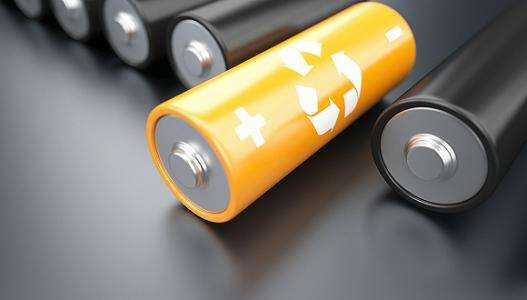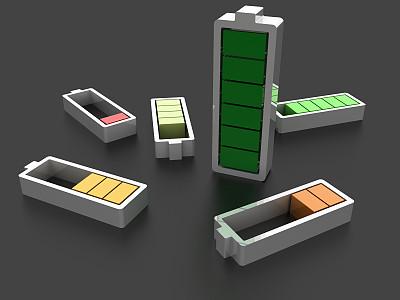Replacing Lead Acid with Lithium-ion Replacement and Battery Trend
APR 21, 2020 Pageview:904
There is an increase in demand for replacing lead-acid with lithium-ion batteries. One requires considering several things before the lead-acid battery with a lithium-ion battery. Even though the term replacement is straight forward, it is not a simple thing to do. Lead-acid batteries are different from lithium-ion batteries. These batteries differ in charge. Also, both batteries were invented for a different purpose. You cannot plug in li-ion to the place of lead-acid. Using lithium is becoming the new normal as its being used by a lot of electronic device.
Can you replace lead acid with the lithium-ion battery?
The change of batteries is viewed with a lot of skepticism. You can substitute a lead-acid battery with a lithium-ion battery. The batteries are becoming a popular choice because of substantial benefits. Below are things to consider prior to substituting.
Charge voltage
Check the charge voltage of the battery bank and change it if possible. Low charge voltage leads to an incomplete charged battery. On the other hand, high charge voltage will push lithium-ion batteries beyond the optimum temperature.
Ah counting not voltage counting
Several monitoring products for batteries are based on voltage measurement. For this reason, lithium-ion batteries will result in wrong readings causing deep charges. Use shunt-based devices to blend lithium-ion batteries.
Is the lithium-ion battery better than lead-acid?
The following characteristics will help to choose one battery over the other.
Comparison between lead-acid and Li-ion batteries
Capacity
Li-ion has great capacity than lead-acid batteries. Lithium uses at least 85 amp hours while lead-acid uses 30-50 amp-hours. Furthermore, the lead-acid life span is cut short if drained occasionally.
Life span
Despite being careful on your batter to avoid overly drain; lead-acid batteries have a good life cycle for 500 to 1000 cycles. You need to replace it for less than 2 years. Conversely, li-ion has extended the life cycle of 2000 to 5000. It will not require any replacement for a long period.
Efficiency
Lithium-ion batteries have a fast charge technology and that’s why they are widely used, unlike lead-acid batteries. Powerful charger or charging amps charges li-ion for 30minutes. Additionally, you will not worry if it does not charge completely unlike lead-acid that damages. This will give you an opportunity to introduce other energy sources.
Energy
When compared to the lead acid types, lithium ion cells are very effective in energy storage. They charge to 100% efficiency compare to that of lead-acid batteries that charge to 85%. This becomes a great issue if you are running a noisy and expensive generator the whole night. Furthermore, the issue is also seen when charging with solar seeing that your battery will never charge fully.
Maintenance
Li-on requires little maintenance, unlike lead-acid batteries. The lithium-ion battery has a great battery management system that ensures all cells are completely charged.
Cost
Lead-acid batteries win on the coast because they are cheaper than lithium-ion batteries.
Environmental effect
Lithium-ion batteries are cleaner and safe to the environment than lead-acid batteries.
Voltage
Lithium-ion batteries maintain voltage through the whole discharge cycle. In contrast, lead-acid drops voltage during the discharge cycle.
What is the battery trend in the future?
There is advancement in the technology industry that requires more power. Manufactures of batteries are also battling to develop more efficient batteries. Big technology companies like car companies are aware of the disadvantages of lithium-ion batteries. These future batteries will outperform lithium-ion batteries.
IBM’s battery
IBM research claims to have developed a safer battery that is free from heavy metals such as cobalt and nickel. The research reports that the materials are obtained from seawater and will outshine lithium-ion. For instance, it is cheap to manufacture, charge fast and packed in high energy densities and power.
Lithium-sulfur batteries
Researchers from Monash University have invented lithium-sulfur batteries which can save smartphone power for 5 days. In addition, the new battery has lower environmental pollution than li-ion. Also, it offers high power to the vehicle for about 620 miles.
Panasonic battery system
Panasonic management of Ritsumeikan University has developed a new battery that is simple to monitor and check the residual value of li-ion. It is easier to evaluate stacked cells found in electric cars. Panasonic systems will help to recycle and re-use lithium-ion batteries.
Sand battery
This is an alternative li-ion that uses silicon that gives 3 times better performance compared to graphite li-ion. Sand is purified, powdered, grounded with magnesium and salt then heated to get rid of oxygen and produce silicon. For example, Silano is invested by big companies including BMW and Daimler.
Gold nanowire battery
Researchers at the University of California have come up with nanowire batteries that stay with plenty of recharge. This battery is thinner than li-ion and is great for future trends.
Solid-state lithium
This is a superior battery that uses sulfide great conductors. Therefore, it operates at higher capacity levels and charges or discharges in fewer minutes. Its solid-state form means that is safe than other batteries.
Foam batteries
Prieto has developed a foam battery that uses a copper substrate. It is safer, offers fast charging, cheaper to produce, a long life cycle and has high density.
Great graphene batteries
Grab has invented graphene batteries which give 500 miles driving range of electric cars. The industry has said that these batteries charge and discharge in 30 minutes than li-on.
Aluminum air battery
Vehicles are driven for 1,100 miles with a single charge. This super battery uses air oxygen to fill its cathode.
Bottom line
Significant development has been marked in lithium technology hence its demand. Get amazing results from lithium-ion batteries through following operating conditions. Moreover, a microprocessor will help to determine the charging process and the battery's response. New lithium batteries are exceedingly tempting for their wide range of advantages. From the above points, it is clear that lead-acid batteries have more limitations compared to lithium-ion batteries. The Battery industry is looking forward to developing more advanced batteries that will last for hours without recharging. .Even though the batteries are made to do things safely and automatically, taking care of your battery should be a priority.
- Prev Article: What are lithium battery- devices, characteristics, and working?
- Next Article: Are Lithium Batteries Rechargeable- Types and Usage
Leave Message
Hottest Categories
-
Hottest Industry News
-
Latest Industry News














